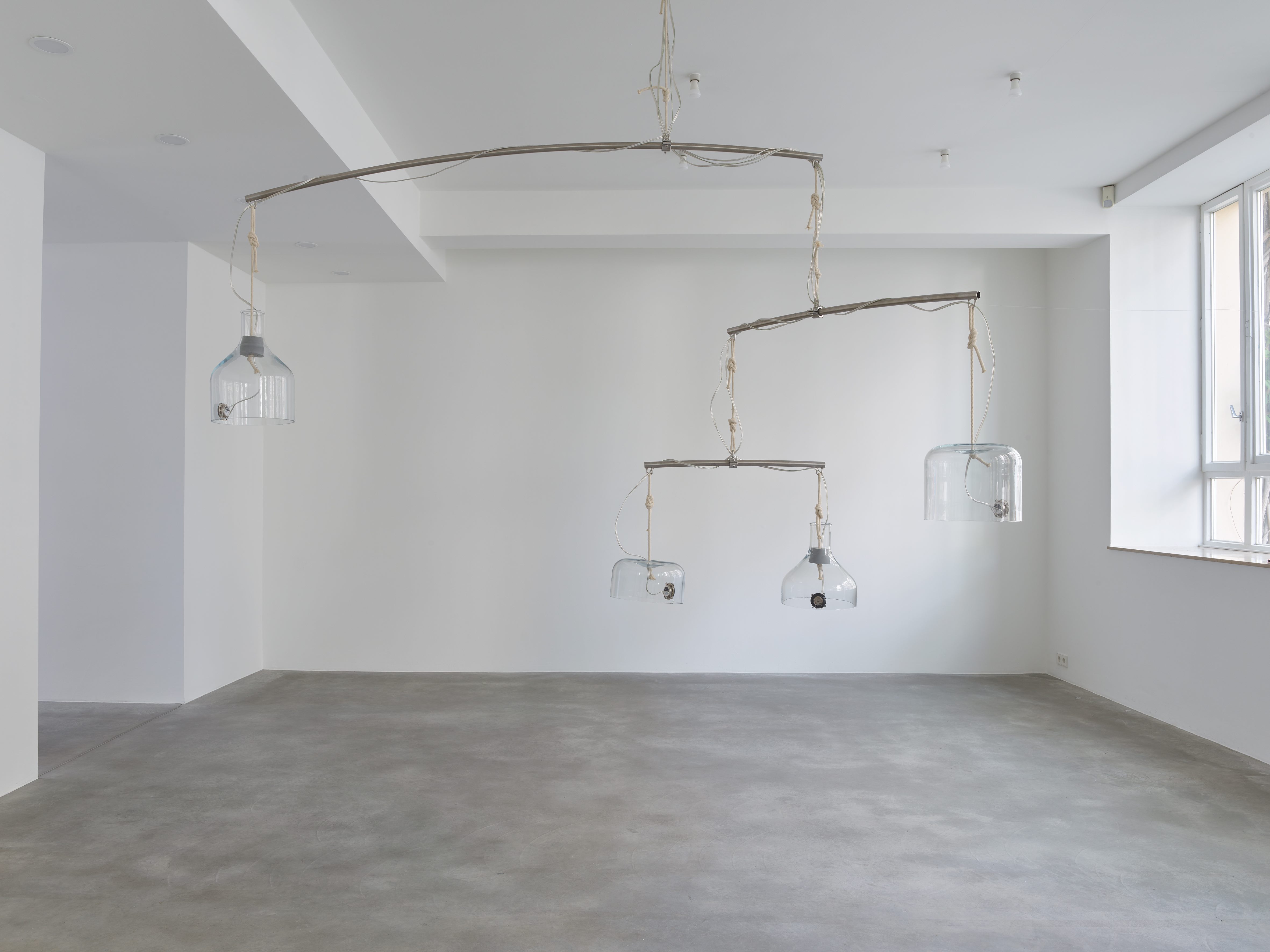Featured in the main space of Gisela Capitain Gallery (Cologne) is Luke Fowler’s sound sculpture Print-through (for Cerith).The work has many antecedents in minimalist sculpture and 20th century experimental music. One of these references is Harry Partch, a queer, American composer who invented his own orchestra of instruments which were all constructed around specific micro-tonal scales. One of these instruments “The cloud chamber bowls”; which were notoriously “difficult-to-find and impossible-to-tune”, was made from sections of Pyrex carboys, suspended from a wooden frame on ropes.The original bowls were found at the Radiation Laboratory of the University of California, Berkeley, and had been used as cloud-chambers to trace the paths of sub- atomic particles. Similar to Partch, Fowler has been deeply involved in working with invented instruments which enable microtonal tunings and new sonorities. In Fowler’s work the gongs, instead of being struck are resonated by means of transducers and fixed “memorized sound”.
The multi-channel composition for Print-Through consists of audio out-takes from Fowler’s films N'Importe Quoi (for Brunhild) and COP26FILM as well as various recordings by Brunhild Ferrari and Cerith Wyn Evans.Together they create an ambiguous soundscape of noise, sound, speech and music; weaving multiple temporalities into an autonomous whole.



